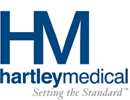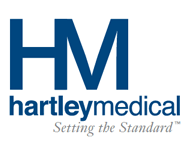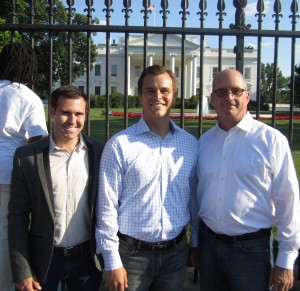The American Society of Interventional Pain Physician’s (ASIPP) 14th Annual Legislative Meeting was held at the Crystal Gateway Marriott June 9-13, 2012 in Arlington, VA. My team and I had the privilege of exhibiting at this event for the first time. We were able to see some familiar faces, meet new colleagues, and interact with some of the nation’s leading medical and legislative bodies – a very rewarding weekend.
|
William’s Notations from ASIPP
|
During the event, I had the opportunity to attend some of the lectures. On the first day, I joined a presentation by Dr. Salim Hayek during which he discussed optimizing outcomes of intrathecal drug therapies – including some issues that I have not reviewed as closely. He indicated that one of the key issues in optimizing outcomes with intraspinal infusions is taking a look at patient selection – both the condition of cancer/non-cancer chronic pain and psycho- and social-evaluations of the patients. He then reviewed the subject of dose escalation associated with age. Two studies were performed: one with rats that demonstrated tolerance development of opioids emerging quicker in young rats than in older rats, and a subsequent study with humans where younger patients developed tolerance sooner than older patients.
Dr. Hayek continued by discussing dose escalation secondary to concomitant therapy with bupivacaine and morphine intraspinally. He highlighted the soon-to-be-published updates to the polyanalgesic consensus guideline’s algorithm regarding treatment regimens of intraspinal drug therapies. He was happy to report that now, along with morphine or hydromorphone and ziconotide, there’s a first-line therapy of morphine and bupivacaine. The doctor presented his own study that demonstrated dose escalations of opioids in patients with just opioids, as well as with opioids and bupivacaine. He showed a decrease in dose escalations in patients treated over time with morphine and bupivacaine, and coupled this with dose escalation reductions with age – both in the young and old. He considers morphine and bupivacaine to be an optimal treatment combination. Fascinating lecture.
On the second day, I attended Dr. David Caraway’s discussion on Emerging Technologies of Intrathecal Therapies. The doctor’s focus was on neuro-stimulation and understanding the stimulation technologies. Neuro-stimulation dates back to the 1960s and, in recent years, new devices and target sites have been developed to treat a greater number of conditions.
|
14th Annual ASIPP Meeting
|
Dr. Caraway presented new information on the dorsal root ganglion (DRG). He considers the DRG a critical structure in pain transmission. Research has demonstrated the DRG to be a highly structured ganglion comprised of over 150,000 neurons, and Dr. Caraway considers it to be a robust structure due to its consistent anatomical location and small tissue mass that allows site-specific stimulation. During the 2010 Napa Pain Conference, Dr. Robert Levy presented a remarkable lecture that detailed new information on the DRG that relates to Dr. Caraway’s talk. These studies have opened new opportunities in treating a variety of pain conditions. Dr. Caraway feels that stimulation of the DRG has a selective altering of membranes to control pain, and the use of High Frequency Stimulation (also known as “neuro-therapy”) seems to be effective in providing pain relief. Currently, there are five U.S. sites conducting studies on sub-threshold conventional stimulation. The change in technology has allowed new achievements, and new studies which have shown an improvement in patients’ quality of life.
Once again, a fantastic conference advancing the world of pain medicine. I continually look forward to attending these events and staying current with the latest legislative, technological, and medical topics that are changing the world of pain management.
I would like to take this opportunity to thank Medtronic for its continued support at these conferences, and a special, “Thank You” to Medtronic’s Michael Draper and Mark Fisher for some stimulating conversations throughout the weekend. Always a pleasure.
For more conference recaps, visit Hartley Medical’s Knowledge Center by clicking here.



Leave A Comment